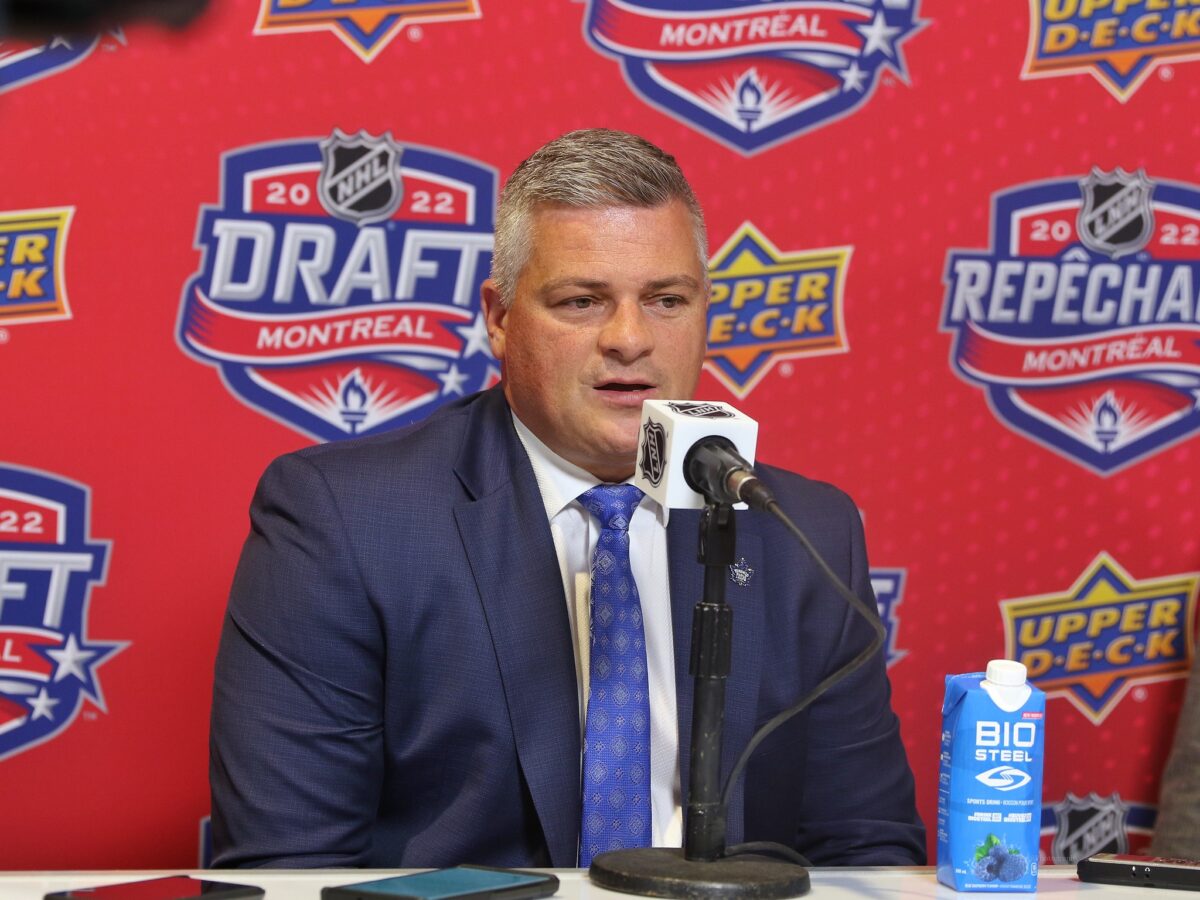If Auston Matthews isn’t a valuable enough player for the Toronto Maple Leafs, there is a chance he might become even more valuable. In this season’s training camp, there has been a move to get Matthews more involved in an aspect of the game that he hasn’t played that much, but he could become a demon playing. That’s the penalty kill.
The team is trying an experiment by moving Matthews to the penalty kill; if that experiment works out, it could be huge boon for the team. The move was finally initiated by coach Sheldon Keefe after seasons of discussions. Certainly, Matthews gets it. As a student of the game and a friend with the Edmonton Oilers’ Connor McDavid and his own linemate Mitch Marner, he has to realize the positive possibility.
He has also likely been observing the likes of now-retired Patrice Bergeron and Brad Marchand in similar roles with the near-despised Boston Bruins. The point is that Matthews will see more regular time on the penalty kill this season. My call is that he’ll thrive in the work.
Thus Far, Matthews Has Had Little Penalty Kill Time
Matthews has seen a total of only about 24 minutes on the penalty kill in nearly 500 NHL games, but that’s about to change. He is already one of the NHL’s best 5-on-5 players and is always among the league leaders in takeaways. If this works well, fans might come to expect some amazing highlights this season.
Related: 3 Reasons Maple Leafs’ Marner Will Have a Breakout Season
I can see it now. Marner steals a puck, sends it to Matthews, who takes off shorthanded with a lot of open ice. He scores! There will definitely be more pressure on opposing power plays this season.

At the beginning, Matthews likely won’t be one of the team’s top options on the penalty kill. Those minutes already belong to Marner, David Kampf, Calle Jarnkrok, and perhaps even the speedy Sam Lafferty. The only negative is that Matthews playing time on the kill might erode some of his 5-on-5 time, and he is one of the NHL’s best 5-on-5 players in the NHL. Yet, McDavid seems to be able to put up increasingly good numbers while adding his expertise to the penalty kill, so why not Matthews?
With Alex Kerfoot Now Moved, Why Not Matthews?
With some key Maple Leafs penalty-killers departing in recent years (mostly Alex Kerfoot, who ate up a lot of penalty kill minutes), it’s a good time to explore whether Matthews can provide a dimension similar to what McDavid brings to the Oilers. Matthews already has a strong record as one of the league’s top shot-blocking forwards. That aligns well with the team’s trend toward aggressive penalty killing.
Related: Maple Leafs’ Auston Matthews: The Gift that Keeps on Giving
In a recent interview, Matthews expressed satisfaction with his initial exposure to penalty killing. However, he emphasized the need to gain more repetitions to build up his understanding and comfort in the role. He credited assistant coach Dean Chynoweth for easing his transition into this new aspect of his game. Matthews also highlighted the value of his experienced teammates in the penalty-kill unit and their contributions to his learning curve.
Several Reasons Why Matthews Could Be Great at the Penalty Kill
Matthews has the potential to become an elite penalty-killer for several reasons. First, he has exceptional offensive awareness and a high hockey IQ. These attributes make him a formidable asset in defensive situations. Second, he already possesses an ability to read the game, anticipate opponents’ moves, and disrupt plays effectively. This intelligence translates well to the penalty kill, where quick decision-making and strategic positioning are paramount.

Third, Matthews’ natural scoring instincts could be valuable. He has a penchant for capitalizing on turnovers and creating scoring chances. These could lead to an uptick in short-handed goals, adding an extra dimension to the Maple Leafs’ penalty-killing unit. The two-headed threat of solid defending and potentially scoring on the penalty kill can keep opponents off balance and give his own team a significant advantage.
Related: Chinese Hockey Expanding at an Astonishing Rate
Fourth and finally, Matthews is enthusiastic and willing to embrace this new role. From what I have seen, he’s driven to be the best player in the NHL and he’s willing to work hard to get there. I have no doubt he will show the dedication needed to learn and improve. His work ethic and ability to adapt are high.
Trying Matthews at the Penalty Kill Is a Solid Coaching Move
In addition to Matthews’ individual skills, the Maple Leafs’ coaching staff knows the team needs both diversity and depth in their penalty-killing options. By moving Matthews into the penalty-killing rotation, the coaches can manage his ice time effectively. This ensures he remains a key part of the 5-on-5 play while contributing to the team’s defensive efforts when down a man.

The bottom line is that adding Matthews to the penalty-kill unit gives the team yet one more multi-dimensional weapon. His defensive skills, offensive instincts, and commitment to improvement make him a great choice for this role.
The question I have is whether Matthews could become one of the league’s elite players in this specialized aspect of the game? If he could, he would provide the Maple Leafs with a huge (and scary for the other teams) advantage during this critical time of a game.
